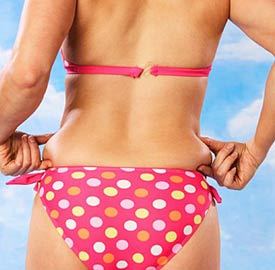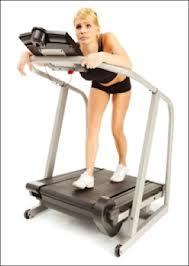
Women's complete guide to 'Hip and thigh fat' reduction
, by Richard Lovatt, 10 min reading time
Stay tuned, Your Favourite supplements will be back in stock soon!
Stay tuned, Your Favourite supplements will be back in stock soon!
Stay tuned, Your Favourite supplements will be back in stock soon!
Stay tuned, Your Favourite supplements will be back in stock soon!
Stay tuned, Your Favourite supplements will be back in stock soon!
Stay tuned, Your Favourite supplements will be back in stock soon!
Stay tuned, Your Favourite supplements will be back in stock soon!
Stay tuned, Your Favourite supplements will be back in stock soon!
Stay tuned, Your Favourite supplements will be back in stock soon!
Stay tuned, Your Favourite supplements will be back in stock soon!

, by Richard Lovatt, 10 min reading time
It's 2020 and at least in todays day and age, people are much more accepting of all body shapes and sizes. However, this doesn't stop some women ask the question, 'what can we do about these soft thighs, hips and glutes?'
You see, the same way some men have a problem with holding most of their weigth in their lower stomach, a lot of women have a problem with holding most of their weight around their hips, thighs and glutes.

So in order to understand what's happening. Let's go back to basics.
First let’s look at fat cells. Under the microscope, fat cells are all absolutely identical, whether you’re a male, female or badger ( i have no references for the badger fat cell unfortunately). Physiologically they’re all the same. But there is something different, something trying to stop us from losing fat. Now in women, it’s pretty easy to see. You are put on this earth to reproduce, to make babies. That is the sole reason it is hard to budge fat off in the reproductive area, its the last place the body will want to lose fat from. It stores fat as a protective mechanism so that if it were to happen that you couldn’t eat for a few days/weeks, you could survive and still reproduce.

Picture this, you’re stranded on an island with no food, but you do have water. Your bodies predominant fuel source will be fat, and of course protein. In a state of starvation, metabolically active tissue like muscle will of course be used. It’s just something that the body doesn’t need to lug round. It’s useless here. But, the body does need to keep the fat that is protecting the very thing that is the mechanism to reproduce. You go weeks without food and you’d see, the very last place to lose fat would be the thighs, hips and glutes. It’s just innate. Sorry girls.
Some people tend to call upon hormones to be the biggest culprit. You must have heard your personal trainer, or read on the internet that your legs are fat because of excess oestrogen right?
Well, the truth is, forget oestrogen. It may cause a slight difference. Hormones like oestrogen can generally affect where calories get sent, but, they still don’t affect the physiological trait of where you store fat and the underlying physiology of a fat cell. Your thighs, will still remain stubborn believe me. Even if you cleared all oestrogen, you’ll still have the same problem. Remember, no matter what, you are genetically wired to hold fat there. Sorry for rubbing it in.

Moving on, a massive point I’d like to make is one reason I believe girls can seemingly lose fat from the upper body but seem to hold more fat lower body, is the deficit they create through diet or exercise. It’s always too big!! It’s not that you wont eventually lose that fat, but you will have to be damn patient.
On top of lots of cardio, women seem to go low calories with diets that incorporate low fat, low carbs, moderate protein. Stop right there. This is doubly as bad, as you can now probably imagine. Yes, in a deficit, your body will lose fat, but when you create such a large deficit, consistently, there is zero chance you are losing those stubborn areas. Once again you are putting yourself under a massive amount of stress, we are species who wants to survive, and low calories will definately put you into some form of survival (adaptive thermogenesis). It may let you lose some fat upper body (which it may give up freely) and it also may give up muscle tissue, because on top of that, muscle is useless when it needs to survive.
Say you create a small deficit, a reasonable 300kcal each day from your maintenance, you have a far greater chance of losing such fat from your body.
There are a few other considerations, but overall, a small reasonable deficit is key. Utilise weights, stimulate metabolically active tissue (muscle) and signal to your body an anabolic state through dietary protocols. Protein is massively important.
Hey presto you’ll be well on your way to budging those last bits of fat.

Some women have it easy, genetically they have lean legs/glutes already, but most of you aren’t the minority. It’s going to take hard work and consistency. 4 weeks isn’t consistent, 16+ is, so get you’re head down and get working. No more buts, no more binging on cookies. Lift that heavy weight off the ground and put it back down, repeat.

Here’s some information from my stubborn fat article which i'll upload in a few weeks time
“Most people don’t know what stubborn fat actually is. Just because you have bingo wings (back of the arm fat) doesn't mean its stubborn. In most cases, its the last bit of fat to come off when you’re dieting down to really low body fat levels. Usually lower abs and back for men and the lower body and glutes for women. On average you won’t come across that stubbornness until you get under that mystical 10% body fat for men and maybe 16-18% for women. Above that, then fat loss is actually relatively easy just following some simple easy steps, however, that’s not what this article is about. This article is going to outline what stubborn fat is and what I use to get rid of it it. Some of you may find it helpful, especially as we are approaching BodyPower.
We all know when it comes to fat loss, we have to create some form of caloric deficit right?(remember how I acknowledged the reasonable deficit before?) When the body senses a caloric deficit, the catechlomines come out to play. These two bad boys (adrenaline and noradrenaline) are released into the blood and latch onto fat cells. Catecholamines basically aid fat mobilization by activating another bad boy, hormone sensitive lipase. This hormone takes the fat out of the cell to be used as energy to make up for the created deficit. Basic right?
There’s more!
Since I’ve read Lyle McDonalds “stubborn fat” book, it seems there’s a big difference between normal fat and stubborn fat. It’s to do with the receptors in the cell (this you can’t notice under the microscope) and how many of each receptor there are. As he puts it, easy fat has a high ratio of b2-receptors and stubborn fat has a high ratio of a2 receptors. Easy.
So what can we do about it?
There a three things that we can do here, all of which act as an alpha 2 antagonist which means we are switching off those stubborn receptors in fat cells and freeing them up to be mobilized and used. I won’t go into details;
1- Low carb diets magically act as a alpha 2 antagonists. This is one reason I like the low carb diet in women. Although it depends on soooo many factors such as activity levels, If someone is able to fit a low carb diet into their plan then why not! Keep carbohydrates under approximately 20%
2- Fasting, and forms of it promote blood flow to these stubborn areas. This doesn’t mean in any way I’m telling you to start fasting, because as with most things, we have to take a lot into consideration and once again, activity and stress levels come into play
3- The last is a stubborn fat protocol which I will out line (yes it is cardio, but remember, its a tool we use when we need it, and in this situation we are so lean, we are utilising it to help mobilise stubborn fat areas)
1. 5-10mins warm up, just pick a piece of equipment and get on it
2. If you have a partner this part can be made easier. Hop on a bike, start pedalling, when it hits a round number I want you to sprint as fast as you can for 5 seconds. Yes you’re probably thinking that there’s no resistance. Well on the point of 5 seconds when your feet are moving faster than the bike itself, your partner will enter level 15 or above, suddenly you will have speed and resistance. This is the catalyst for FFAs to be released from the cell. You’re then going to try and maintain your overall speed for another ten seconds. All in all you will have been working 15seconds! That’s it, one sprint done. If you need a sick bucket at this point, go and get one. Your next sprint will be as soon as you feel you can put your ‘all’ into another sprint. Or to be precise, when your heart rate drops back down to 110-120. All in all, you may be able to do about 3 sprints (if its your first time). Work up to 5 if you can. If you complete 5 with ease, believe me, you’re not working hard enough. You should feel like death
3. Hop off the bike and rest for 5minutes, letting the lactic acid work its way out and then comes the boring bit
4. Pick another piece of equipment, usually the treadmill. You’re now going to do a 20-40minute uphill walk. In simple terms, you’re now going to use up all those FFAs you’ve just released into the bloodstream. For women especially, lyle explains, If you leave this next part out, your fat is fine to just relocate to another part of your body, preferably the lower half. As explained with the link above.
5. After the walk you should have a great sweat on but you won’t be out of breath. So here’s where my favourite bit comes into play. Lyle uses another cardio form of interval here. I like to use one of my favourite exercises, the kettlebell swing. Awesome movement, full body, great for activating those glutes and can also teach you to sit back in the squat part. Here we use another form of interval for the typical phrase we all know, EPOC. These intervals are going to be longer in length and not so much maximal efforts. Here I want you to do as many swings in 30seconds as you can followed by 30secpnds rest. Repeat for 5mins.
And there you have it ladies. Your guide is complete. Let us know how you get on!